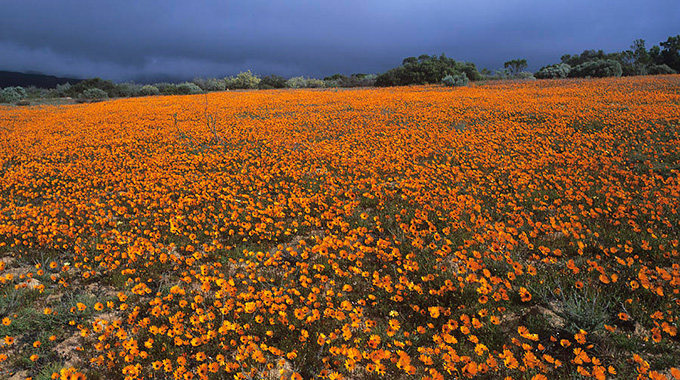
112. The Rarest Commodity on the Planet
When my dad and I used to roam the Namib desert in search of valuable gems or minerals in 1955, I learned something about the kind of gemstones and/or minerals that we could find there, as well as some commodities we couldn’t find in that desert. Only later did I learn that the Namib has traces of almost every kind of gemstone and mineral available on Earth but that few of them exist in viable quantities for commercial exploitation.
We found huge numbers of almandine garnets which, although very pretty when cut, today have almost no value at all. Garnets are a darker version of rubies and were popular during the Victorian era. I became quite adept at spotting them lying on the desert floor. With the powerful sun overhead, they look black against the sand but there’s an indefinable something that made me choose them most of the time over other ordinary black stones.
We also found other semi-precious gems, including the five stones I found that had not been seen in the Namib before. They were classified as water sapphires and my dad had them set in the engagement ring that he designed for my then fiancée, now wife, Hero.
My dad also acquired a diamond prospecting license, but we were in the wrong part of the desert for those valuable gems. The Namib desert extends south to the banks of the Orange River, which is also the border between South Africa and Namibia. Diamonds were washed down this great river from numerous kimberlite pipes along its route to the west coast. It has its source on the other, eastern side of the continent in the mountainous kingdom of Lesotho. Walvis Bay and its surrounding desert where we did our exploring is hundreds of miles to the north of the Orange.
My dad did discover an incredibly high-grade iron deposit but, when surveyed, it was found to contain only a quarter of a million tons of the ore. This was not enough to make the cost of mining it viable. Likewise with some copper deposits he found. So, although we both enjoyed our time exploring the desert, it never really became profitable. My dad did eventually find some road-making material for the dirt roads of the town of Walvis Bay as well as the couple of roads that led inland across the desert. He did make some money from that in addition to his main activity as the owner of a pilchard fishing trawler.
In subsequent years after settling into a career in film and television, I travelled extensively in Africa, North America and Europe. Wherever I went, I would still wonder what precious minerals lurked underneath the soil or rocks of the area I was visiting. However, the beauty of many of the places I visited took precedence over the hidden wealth of the area.
To digress from my main theme for a while, I’d like to mention some of the places I’ve visited that struck me as being particularly beautiful.

Starting with South Africa, where I lived longer than anywhere else, I would claim that it has to be one of the most beautiful countries on Earth. From the magnificent city of Cape Town that nestles under the protection of the extraordinary flat-topped Table Mountain, to its magnificent coastline stretching up the east coast to what is known as the Garden Route, a series of magnificent beaches, lagoons and river mouths disappearing into the largest remaining indigenous Knysna forest in southern Africa; to the 1,500-mile Drakensberg Mountain range; to the largest wildlife park in the world, the Kruger National Park; to the springtime phenomenon of the Namaqualand daisies, mile upon mile of semi desert flowers that bloom once a year. I could go on and on. It’s all stunningly beautiful but, to be fair, let me mention other parts of the world that had me rekindle my love of this planet.
The Grand Canyon in the US comes to mind, the Big Sur scenic drive on the West Coast between San Francisco and Los Angeles, the little town of Aspen and the surrounding mountains, the fishing village of Marblehead on the East Coast and the magnificent sheer cliffs of Yosemite. I only visited Vancouver in Canada but found its surrounding areas stunningly beautiful. These are just some of the places that stand out for me personally.
Then, of course, England and Europe: England’s scenic beauty is in vivid contrast to the ruggedness of South Africa or the vastness of the US and Canada. The small and often ancient villages with surrounding rolling fields, magnificent old oaks, daffodils, crocuses and bluebells have a very special charm. And, in Europe, the Swiss Alps and its lakes, the Danube in Germany, the Italian lake districts of Como and Maggiore, and the wonderful coastal villages perched high on the cliffs overlooking the sea.
How does this relate to my search for the rarest commodity on Earth? It doesn’t except that it may have helped me to look beyond the rarest minerals or gemstones. In fact, the eight rarest of these are all gemstones. For the record, they are red beryl, Paraiba tourmaline, alexandrite, padparadscha sapphire, painite, Kashmir sapphire, red diamond and jadeite. Painite was discovered in 1951 by a man called Pain. It is a ruby-like gem found in Burma and only two dozen were subsequently found up until 2004.
Anyway, I recently sat down and thought beyond minerals and gemstones. What commodity in 2022 is the rarest of all? Sadly, the answer I came up with is…Truth!
Regardless of one’s political or philosophical beliefs, how can anyone be sure of anything anymore? For every statement on almost any subject under the sun, there is an opposing viewpoint. This may have been true previously but with the advent of the staggering quantity of data thrust upon us, primarily by social media and television, the whole situation has gotten worse. Finding the truth has been has become virtually a mission impossible.
The average person will be swayed by the major viewpoints put forward by the media. The sheer volume of verbiage and false data spewed forth 24/7 makes it so confusing that the line of least resistance is the one most followed.
Is it any wonder that the human race is becoming so obese, so prone to sickness and prone to believing whatever the latest ads have to sell us?
Where is the yardstick for accuracy? Why should my truths be any truer than your truths? For every piece of data I can produce to underline the veracity of my truth, there are a dozen conflicting reports by so-called experts that shoot my truth down in flames.
Then there are the “wonderful” phrases coined to put down and thoroughly demean the opposite point of view, such as “Aah, so you’ve bought into that conspiracy theory, have you?”
Name calling has also been channeled into a few choice generalities designed to make the other person feel out of step with the “popular” view.
Where oh, where has that precious commodity “Truth” disappeared to? It’s still there, certainly, but it’s been covered up by a morass of half-truths and downright lies. Am I pointing fingers at any one group or person? No, not really. We’ve all been sucked into a world where (in order to just survive the daily onslaught of verbal garbage and finger pointing) I’m certain that even the best-intentioned people are trotting out white lies just to stop running afoul of the rules which are increasingly imposed on us.
That’s why I had some fun remembering places of beauty I have experienced around the world. They are there and they are real. No amount of gobbledygook can remove them!
There is definitely one truth that I’m clinging to like a drowning man finding a piece of floating debris from the Titanic. That is the certainty that the soon-to-be announcement that the first commercially viable model of the ExoBrain computing system is available. We can, amongst many other valuable actions, begin to create a platform for that increasingly rare commodity … Truth!

